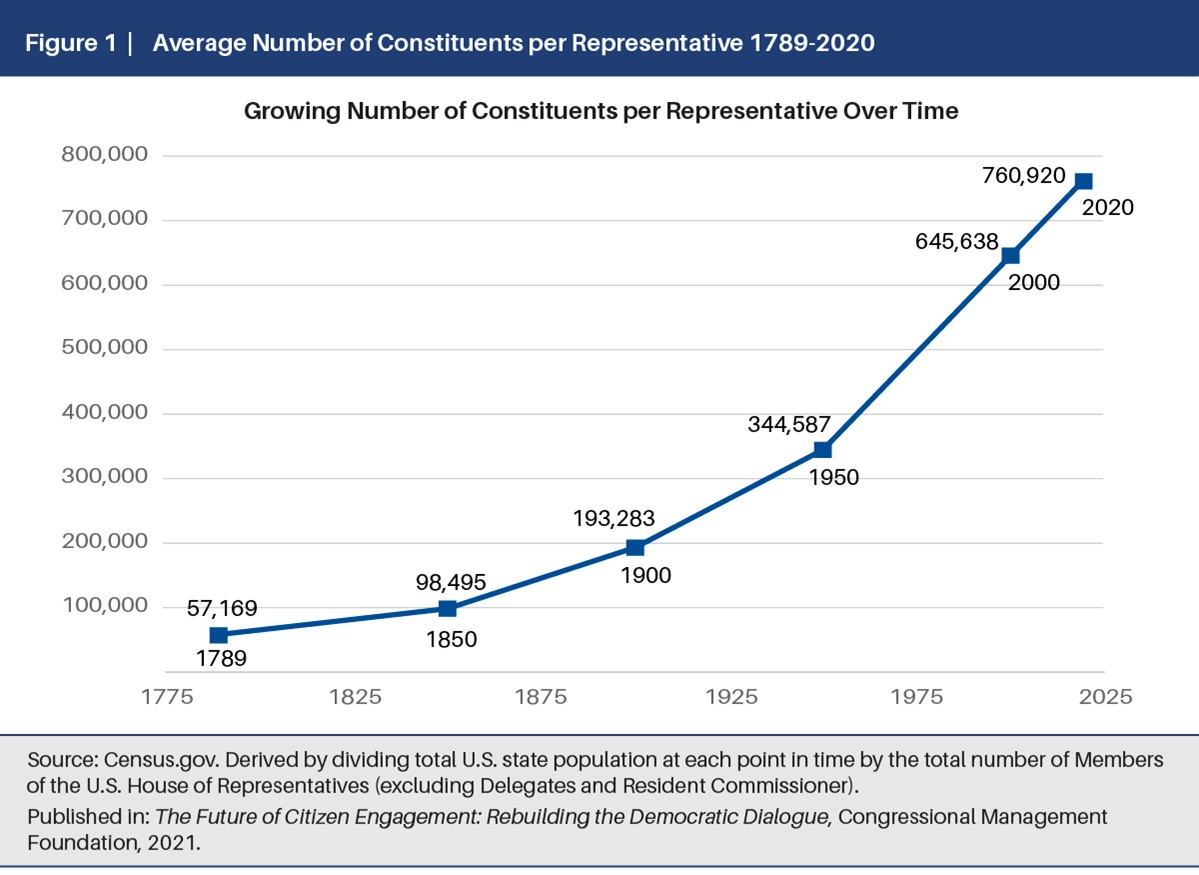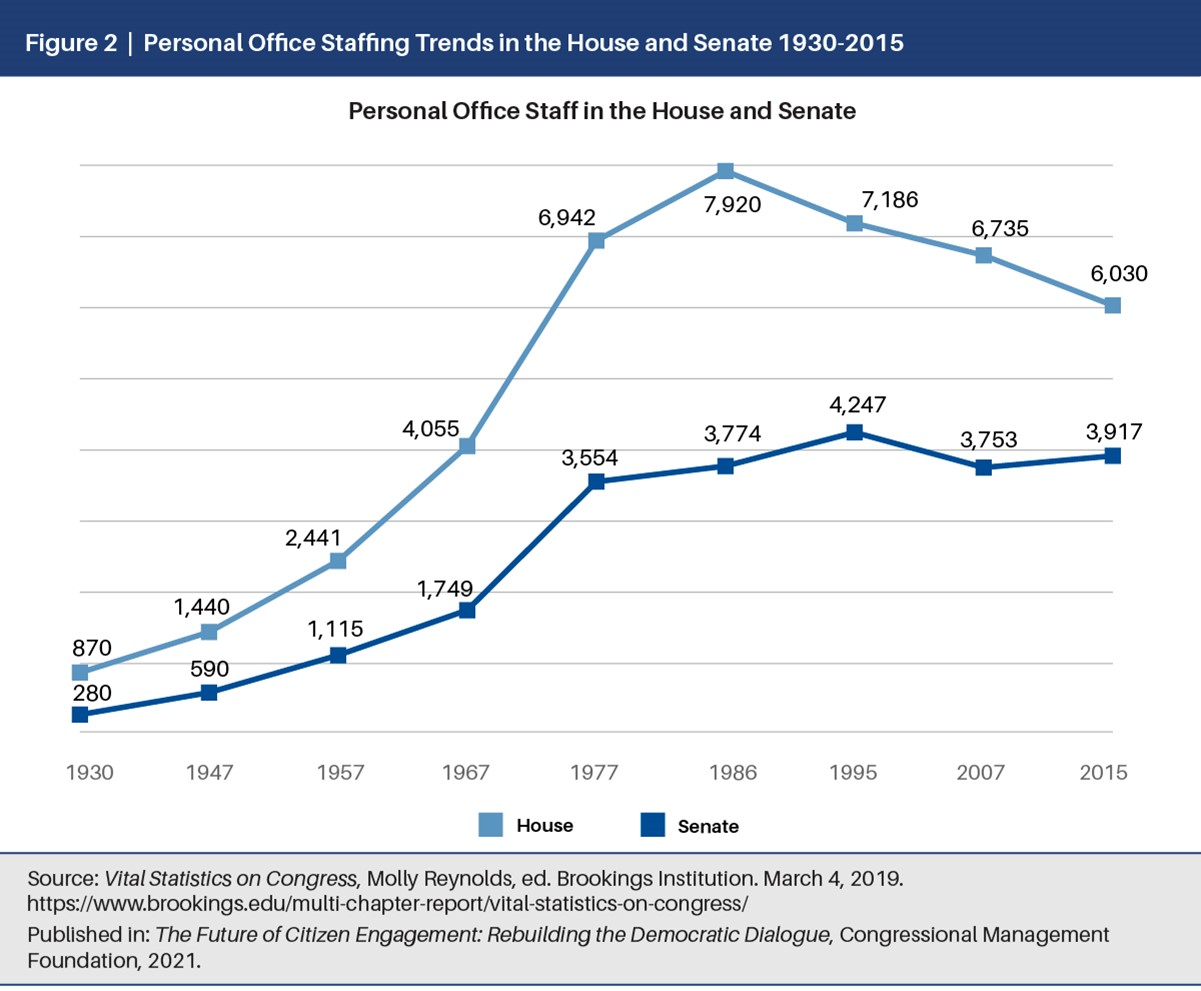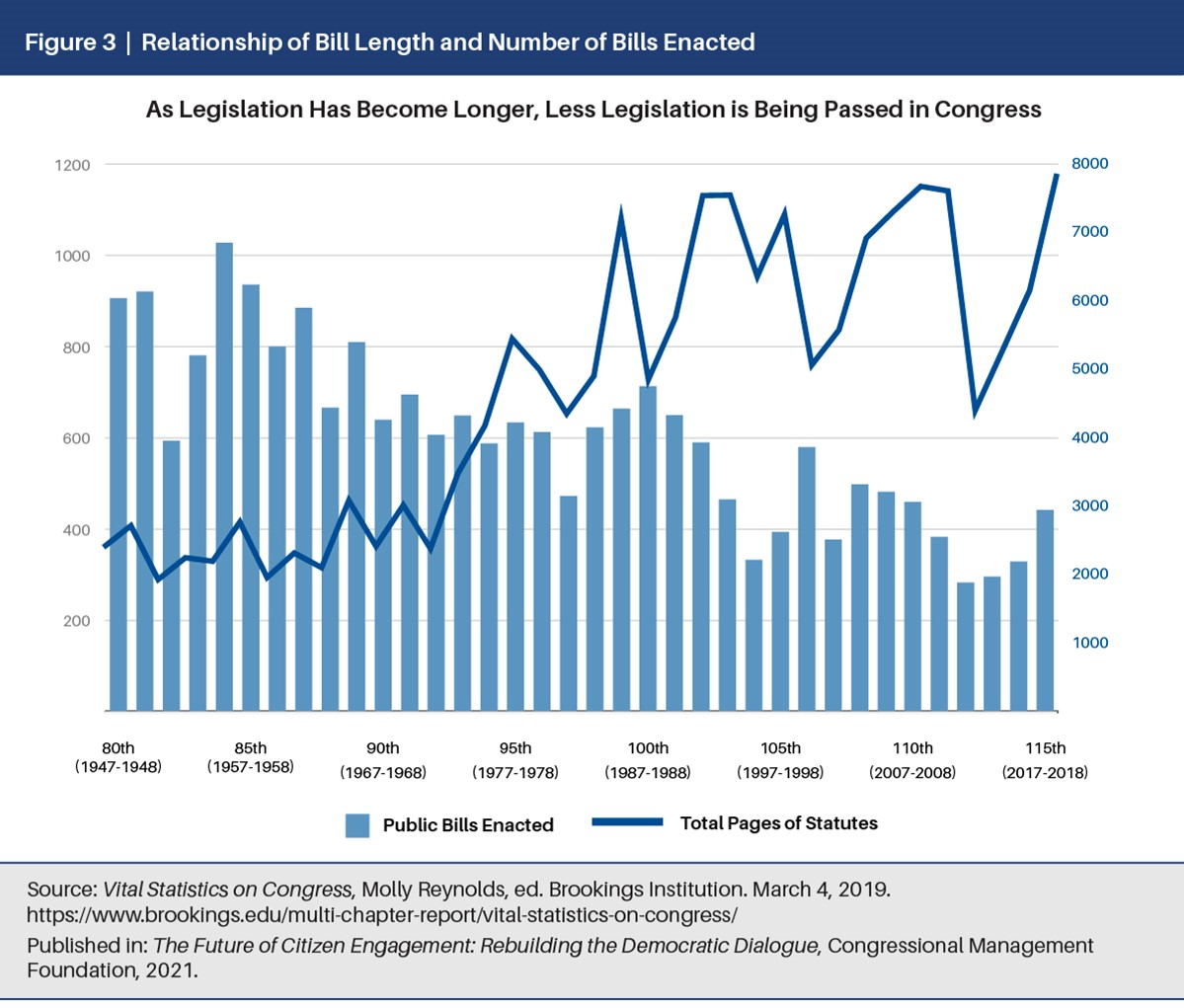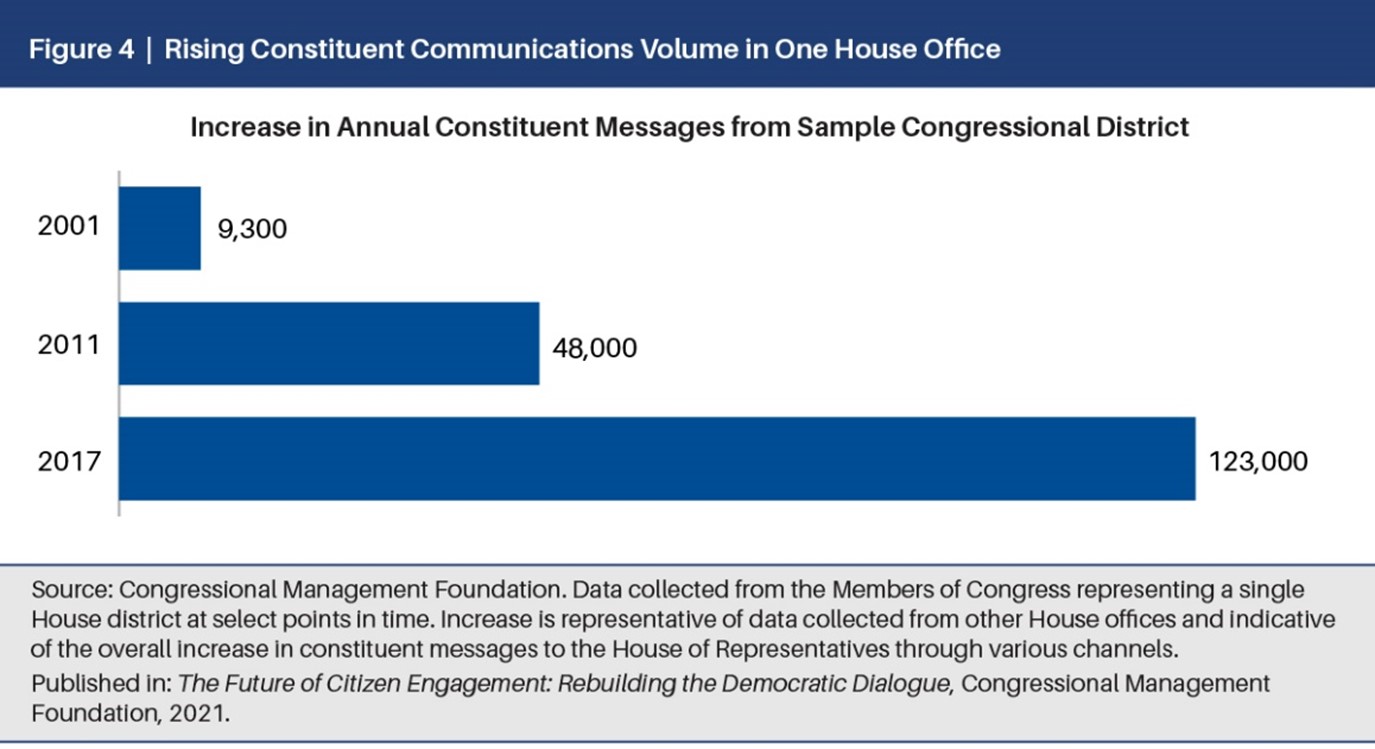This is an excerpt from The Future of Citizen Engagement: Rebuilding the Democratic Dialogue. Most citations have been removed but can be found in the full report. Select resources are included as links at the end of this post.
Though the public image of Congress is as an institution with unlimited resources, the lack of capacity for Congress to perform its role in democracy and the impact that it is having on our practice of democracy is now well-documented. Significant increases in the U.S. population and reductions in Legislative Branch staffing and budget are some of the biggest challenges to congressional capacity. [KG1]In 2015—the most recent data available—the entire Legislative Branch had fewer than 20,000 employees (not counting Senators and Representatives, themselves), which is several thousand fewer employees than Congress had in the 1980s and ‘90s. Additionally, the Legislative Branch represents less than one percent of the entire non-defense discretionary federal budget, and funding for the Executive Branch is more than 120 times the funding for the Legislative Branch.
The Legislative Branch is supposed to be close to the People, understand and respond to their needs, hold the entire government to account, and monitor how taxpayer dollars are being used. But how can a branch that is funded and staffed with a fraction of the resources of the Executive Branch fulfill its duties, let alone act as a co-equal branch of government?
Additionally, as Figure 1 shows, Representatives in the House now have 13 times more constituents than those in the 1st Congress did, and three times more than in 1929, when the number of Representatives was frozen at 435.

Senators now have between 580,000 constituents (the population of Wyoming) and 40 million constituents (the population of California). Senators and Representatives have staff to help them manage now, but not nearly enough to meaningfully engage, listen to, and understand so many people, let alone integrate what they hear into comprehensive and inclusive public policy proposals.
In their personal offices—where constituent engagement is facilitated—Representatives can have a maximum of 18 full-time employees divided between their offices in their districts and in Washington, D.C. Most have fewer, as their budgets—around $1.5 million at the time of this writing—cannot support salaries for 18 employees, even at the comparatively low pay rates for congressional staffers. While Senators have no staff limits, budgetary limitations mean they typically employ between 35 and 70
staffers in their personal offices, divided between their state offices and Washington, D.C.

Additionally, as more information and more constituent engagement comes Congress’ way, it has become that much more difficult to sift through it all to understand it thoroughly and develop effective, responsive public policy. One small indicator of technology possibly making the work of Congress more challenging is the length and complexity of legislation. As Figure 3 shows, as information and documents have become easier to produce, legislative documents have become longer and more complex, and less legislation is being passed.

At the same time, constituent input has become more abundant, as exemplified in Figure 4, which shows the increase, over time, of “mail” (which now includes postal mail, email, phone calls, and other contacts from constituents) in one House district. This district has been represented by two different Members in the years included, but the rise in volume is commensurate with available aggregate House data. This district has seen the volume of their constituent mail increase by 13 times over less than 20 years. This increase in volume is largely the result of coordinated grassroots advocacy campaigns from associations, nonprofits, corporations, and other organizations. These organizations encourage their members to reach out to their Senators and Representatives to express their views. They are largely form messages with little or no personalization, and they result in every House and Senate office having to process and respond to identical messages across Congress. This requires significant resources in every single office, and most of it is duplicated effort.

CMF’s report The Future of Citizen Engagement: Rebuilding the Democratic Dialogue explores the current challenges to engagement and trust between Senators and Representatives and their constituents; proposes 10 principles for rebuilding that fundamental democratic relationship; and describes innovative practices in federal, state, local, and international venues that Congress could look to for modernizing the democratic dialogue.
Additional Resources
- The Future of Citizen Engagement: Rebuilding the Democratic Dialogue
- The Future of Citizen Engagement: What Americans Want from Congress & How Members Can Build Trust
- State of the Congress: Staff Perspectives on Institutional Capacity in the House and Senate
- Legislative Branch Capacity Working Group


